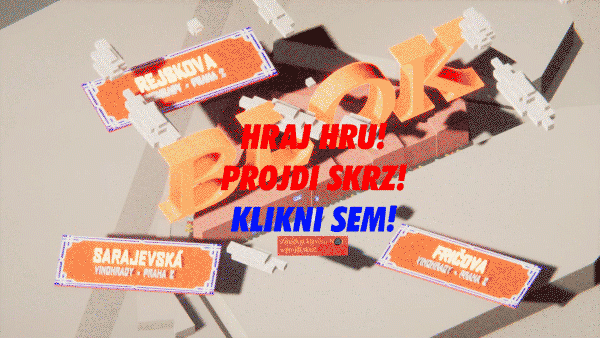Date: 16.07.2020 — 16.08.2020

Vernissage: 16. 7. 2020
Guided tour with the authors: Wednesday 12. 8. 2020 at 6 pm
Opening hours: Friday–Sunday, 10 am–5 pm či or by appointment via mail.etcgalerie@gmail.com
Authors: Alžběta Kvasničková & Vojtěch Rada
Curators: Markéta Jonášová & Tomáš Kajánek
In their collaborative exhibition project, architect Alžběta Kvasničková and artist Vojtěch Rada walk through the Nusle neighbourhood to capture both past and present, material and subjective elements that constitute the specific character of this area. The phrase walk-through refers to the act of guiding others through a particular space, enabling them to gain new knowledge about the area. In the world of computer games, this notion refers to a shared guide to a game that walks players through the virtual world. Together with the local residents, the authors of the exhibition take the role of guides, uncovering phenomena that shape life in Nusle. A series of maps depict significant spatial formations and enables the viewer to search for their new interconnection based on a cartographic abstraction. These maps allow us to look on space with distance, to archive the past and render new possibilities of roads and passages, which are then mirrored in moving image. The videos materialise ideas about possible alternative routes, specifically the idea to create a suspension path for pedestrians and cyclists leading along the railway line and an escalator, which would connect the lower part of Nusle with the underground station Vyšehrad. The proposed interventions make use of existing transport infrastructure and the topography of the Nusle neighbourhood. This architectural perspective of the elements formative for Nusle is completed with the commentary of local residents, with which one can become familiar while taking a virtual tour around the neighbourhood of the etc. gallery. In his computer game BLOK, Vojtěch Rada allows visitors to walk around the block of houses demarcated by the Sarajevská, Rejskova and Fričova street, and listen to interviews conducted with the local inhabitants. The verified sociological method of interviews is confronted with the randomness of interviewing locals on a phone or when meeting them on a street. Such an approach tosses out the issue of overusing the notion of participation in both architectural and artistic practices and captures the local community in a participatory slapstick of questions, answers, messages, and memories.
The project was financially supported by the Prague City Hall, Ministry of Culture of the Czech Republic and MM Print.